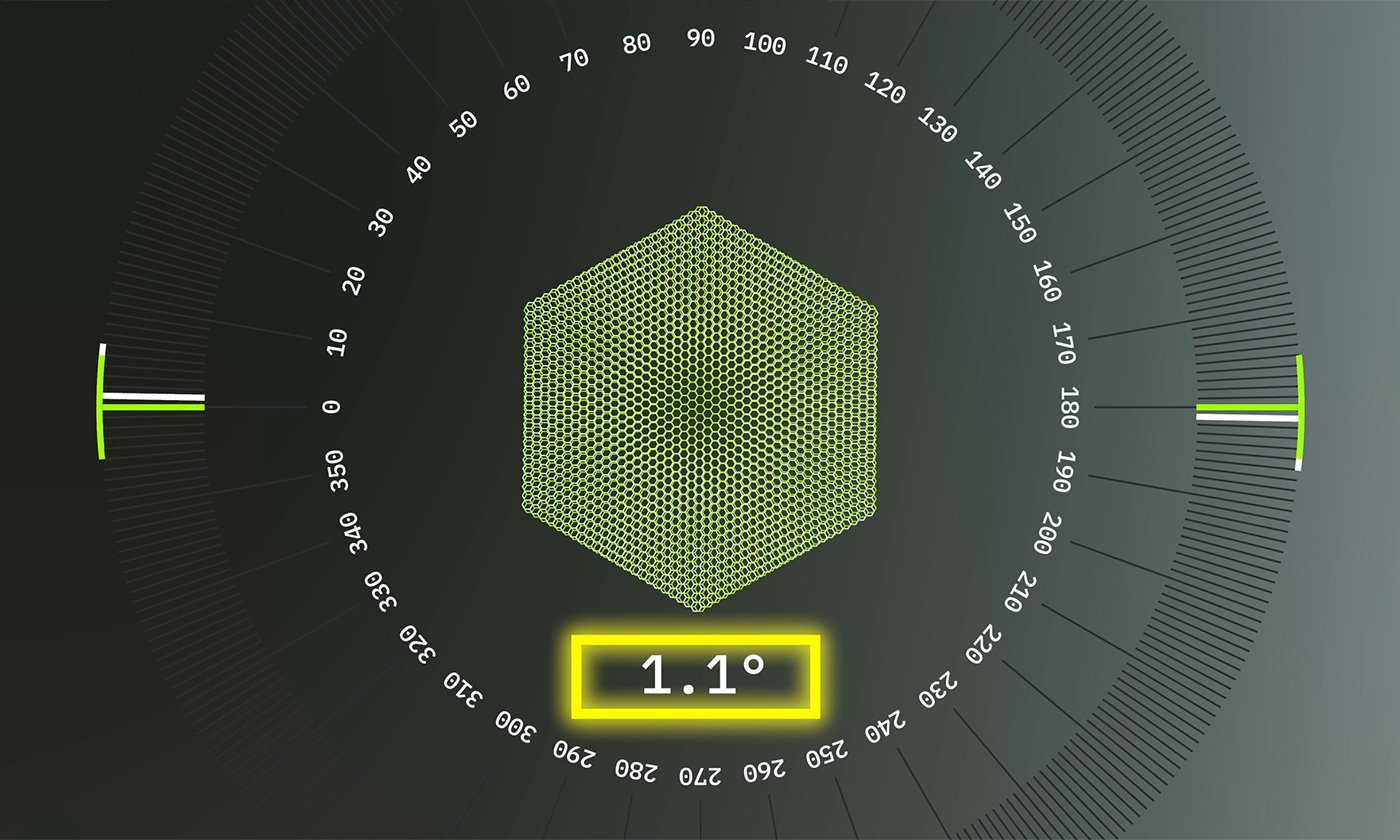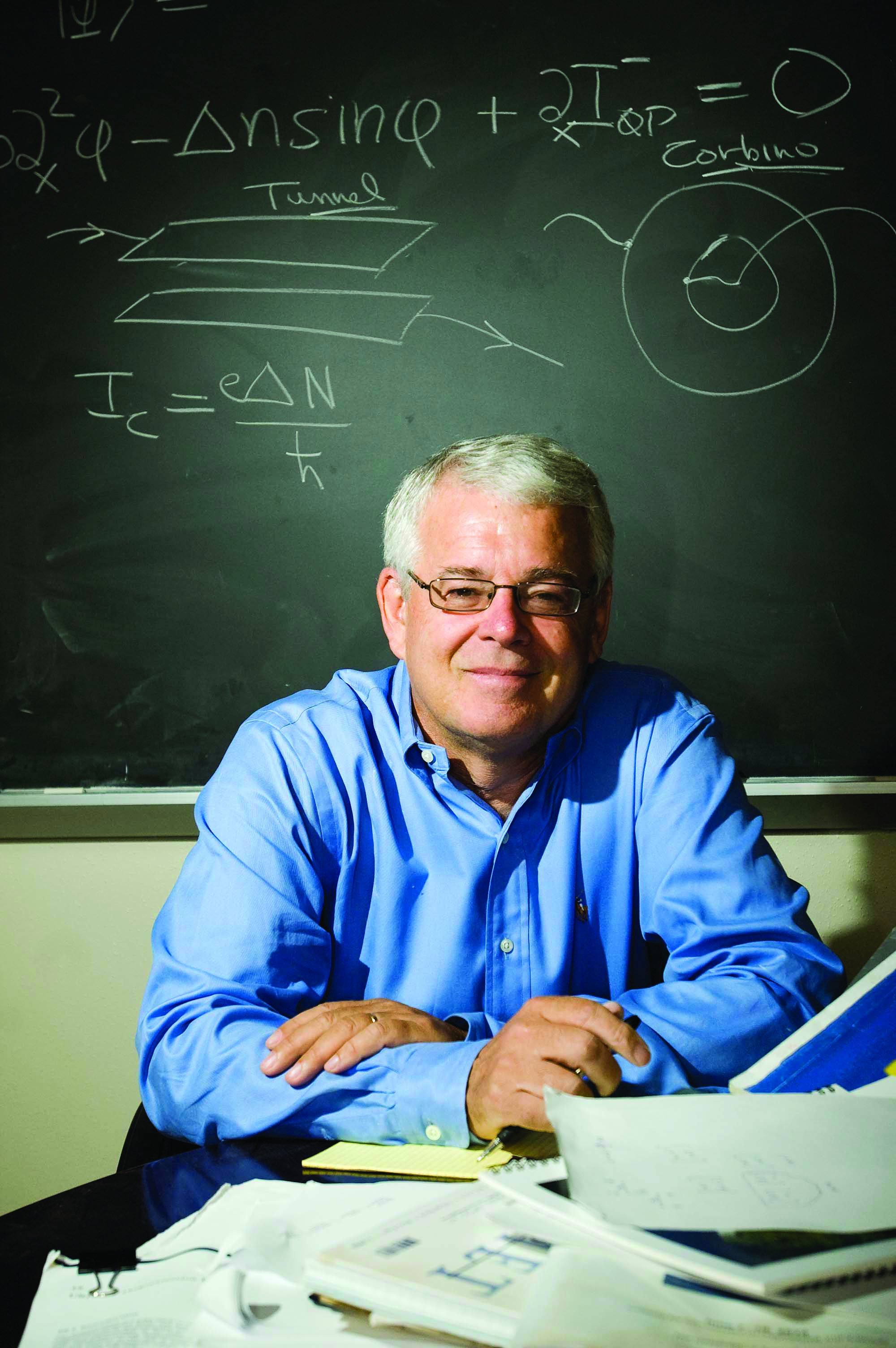Feature Stories
Aaron Dubrow
Related Articles
Twisted Physics
‘Magic angle’ graphene, first identified in simulations at TACC, displays superconductivity

In 2011, Allan MacDonald, a theoretical physicist at The University of Texas at Austin, made an unexpected discovery.
He and postdoctoral researcher Rafi Bistritzer were modeling how electrons behave in stacked two-dimensional materials when one layer is slightly twisted relative to the others. Their results surprised them.
When they simulated two stacked single-atom layers of carbon offset at a very specific angle of about 1.1 degrees — which they dubbed the “magic angle” — the electrons behaved in a strange and extraordinary way, suddenly moving more than 100 times more slowly.
Why this was the case and what it would mean for science would take years to discover.
In the short term, the finding was largely ignored or dismissed. The result seemed too unusual to believe. Moreover, creating a physical example of such a system, with the precise placement of the two-dimensional sheets, was not physically possible.
But not everyone was skeptical. A few experimentalists around the world took note of the prediction published in the Proceedings of the National Academy of Sciences and chose to pursue the “magic angle.”

Seven years later, physicists at the Massachusetts Institute of Technology created a system of layered graphene twisted by 1.1 degrees. They found, as MacDonald had predicted, that it exhibited remarkable properties — in particular, superconductivity at a surprisingly “high” temperature (1.7 degrees Kelvin or -456 degrees fahrenheit).
“It's a holy grail of physics to create a material that has superconductivity at room temperature,” MacDonald said. “That's part of the motivation of this work, to understand high-temperature superconductivity better.”
A 2019 study in the journal Nature by MacDonald and scientists from Spain, the U.S., China and Japan showed that this superconductivity can even be turned on or off with a small voltage change, increasing its usefulness for electronic devices.
Superconducting materials have no electrical resistance, allowing electrons to travel endlessly without losing energy. They are used in quantum computing and could be game changers for electric power transmission.
First discovered in 1911, superconductivity occurs naturally in a few materials. However, they all require extremely low temperatures to maintain their distinctive characteristics. The emergence of precisely stacked 2D materials may change this.
The discovery of superconductivity in twisted bilayer graphene has since provided fuel for a flourishing subfield with a catchy name — Twistronics — and a rush to develop the technology further.
A decade of dedicated study
Ever since the discovery of graphene by Andre Geim and Konstantin Novoselov at the University of Manchester in 2004 (which ultimately led to a Nobel Prize in physics in 2010), MacDonald has been fascinated with these strange, two-dimensional systems and the new physics they may contain.
He began studying the material almost immediately and, since 2004, has used supercomputers at TACC to explore the electronic structure of graphene and other 2D materials.
“My work is all about predicting unusual phenomena that haven’t been seen before; or trying to understand phenomena that are not well understood,” MacDonald said. “I’m drawn to theory that connects directly to things that actually happen, and I'm interested in the power of math and theory to describe the real world.”
The strange properties of layered 2D materials seem to relate to interactions between individual electrons, which become strongly correlated when electrons slow down. Typically, electrons settle into quantum states with the lowest available energies. This does not seem to be the case in magic angle graphene.
“Basically, nothing much interesting can happen when the electrons organize themselves the way they do in an atom by occupying the lowest energy orbitals,” MacDonald said. “But once their fate is determined by interactions between the electrons, then interesting things can happen.”
How does one even go about studying what happens in layered 2D systems?
“Seeing” individual electrons in motion is impossible. Measurements provide clues, but their implications are often opaque and frequently counterintuitive. Computer models, MacDonald believes, help add to the emerging picture of correlated 2D electrons.
Applying theory to never-before-seen systems
In recent years, MacDonald and his team have explored stacks of three, four, or five layers of graphene, as well as other promising materials, particularly transition metal chalcogenides, searching for unusual — and potentially useful — phenomena.
Writing in Nature in February 2019, MacDonald, Emmanuel Tutuc and physicist Elaine Li (all from UT Austin), and a large international team described the observation of excited states of crystals called indirect excitons in a molybdenum diselenide/tungsten diselenide layered material with a small twist angle.
"Research is an adventure, a community adventure, a collective random walk, by which knowledge moves forward."
Excitons consist of an electron and a hole that attract and hold each other in place. These usually exist within a single layer. However, with certain 2D materials, it is possible for them to exist on different layers, which greatly increases the length of time they exist. This may enable superfluidity, the unimpeded flow of liquids – a property previously seen only in liquid helium.
MacDonald and researchers in his lab are currently using TACC’s Stampede2 supercomputer to test models and run simulations.
“Many of the things we do, we could not do without a high performance computer,” he asserted. “Very often, using a supercomputer is the difference between being able to get a satisfactory answer and not being able to get a satisfactory answer.”
The results of computational experiments might seem less immediate or “real” than those in a physical lab. But MacDonald has shown that simulations can expose new avenues of exploration and help illuminate science mysteries like superconductivity. And sometimes the practical results of the work can take years or even decades to reach fruition.
MacDonald was named one of the recipients of the 2020 Wolf Prize in Physics for his work developing twisted bilayer graphene. The award committee described MacDonald’s work as potentially leading to revolutionary advancements in the electronics and computer industries. Approximately one-third of all Wolf Prize laureates go on to receive Nobel Prizes in their fields.
“The thing that's energized my work is that nature is always posing new problems. When you ask a new type of question, you don't know in advance what the answer is,” MacDonald said. “Research is an adventure, a community adventure, a collective random walk, by which knowledge moves forward.”

